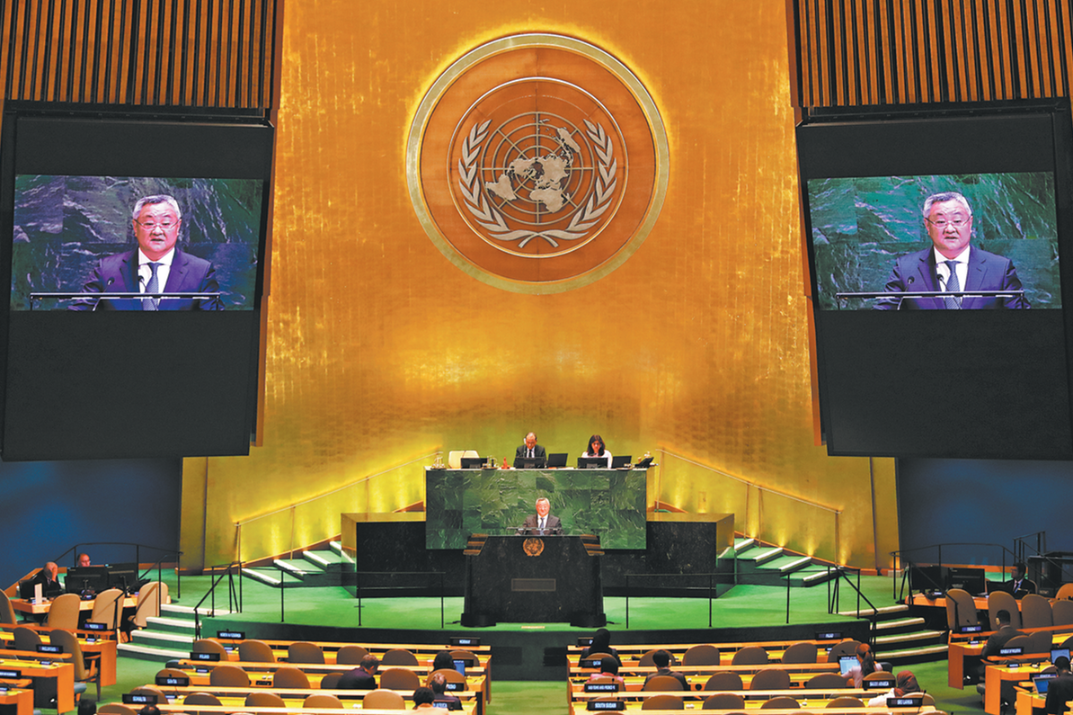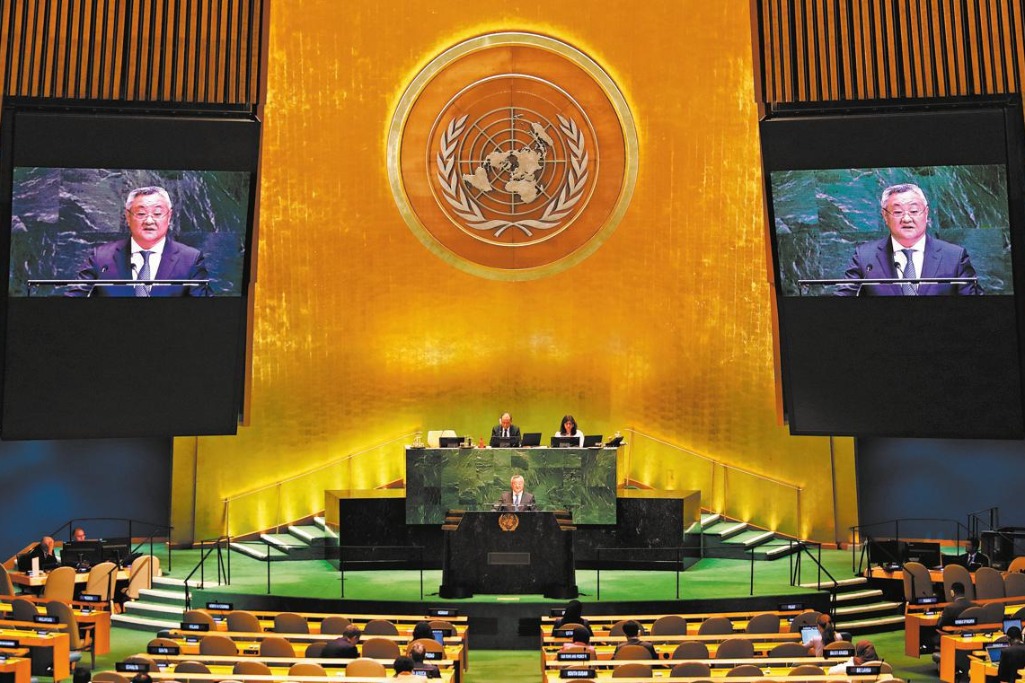Clear targets bring 'Beautiful China' within reach
By Dimitri de Boer | China Daily Global | Updated: 2024-02-28 09:17

In the first weeks of this year, China's central government issued a policy document clarifying what is meant by building a "Beautiful China", and setting a broad range of environmental targets through 2035 and even beyond.
The document covers everything from controlling pollution to protecting habitats and reducing climate emissions. Many of the goals are ambitious, which is very timely, given the urgency of the environmental crises facing the world.
For some, it may be easy to forget that people in China still face a number of environmental challenges. Real-time air quality data first became available in 2013, and it shocked many people. Resolute government action followed, and the national average concentration of PM2.5 — particulate matter of 2.5 microns in diameter or smaller that is harmful to health — fell from 72 micrograms per cubic meter of air in 2013 to 29 in 2022. This sets a powerful example of what can be achieved through improved environmental transparency, governance and law.
Building a "Beautiful China" has become a priority for China's leadership. It links environmental objectives with the desire for better living conditions, and some national pride. It is also recognition that much more work is needed in the coming years and decades, as the country needs to simultaneously address air, water and land pollution, greenhouse gas emissions, biodiversity loss, plastic and chemical pollution, and much more.
This new policy document is important, as it was issued at the highest level and spells out a number of key targets.
For example, electric vehicles are set to account for 45 percent of the sales of new cars by 2027.China is a leader in the production and sales of EVs, with about 60 percent of the global total. This is the first national level target for the overall share of EV sales, giving a major boost to not only the EV sector, but also the booming and rapidly evolving battery industry. It follows another recent government document promoting the integration of EVs with renewable energy in the power grid.
Tremendous progress has been made with electric cars, scooters and buses in China's big cities in recent years. The majority of taxis, and almost all e-commerce delivery scooters and minivans, are now electric.
As a result, the streets are quieter, the air quality is better, and greenhouse gas emissions have been reduced. I live in Beijing, and the difference in noise and exhaust gases is really noticeable when I visit other countries in Asia.
Targets have also been set for waste management, which has been problematic, especially with the explosive growth of e-commerce and takeaway and with the amount of plastic in the countryside and water bodies. By 2027, 60 percent of cities should be "zero-waste" and 40 percent of villages "beautiful". All cities should be "zero-waste" by 2035.
In terms of air quality targets, average PM2.5 concentrations are to fall below 28 micrograms per cubic meter of air by 2027, and below 25 by 2035. This would be a further improvement, although at a much slower rate than in previous years.
The areas protected within "ecological conservation red lines" are to stay above 3.15 million square kilometers. That would be more than 32 percent of China's total land area. This exceeds the target agreed upon at the end of 2022 by all member countries of the UN Convention on Biological Diversity in the Kunming-Montreal Global Biodiversity Framework that over 30 percent of the planet (including land and oceans) should be effectively protected by 2030. Setting targets and road maps for stepping up China's marine area conservation will be an important next step.
In terms of climate action, the document makes no explicit new numerical targets. However, some recent analysis by independent experts suggests that China's CO2 emissions could soon peak, due to the extremely rapid installation of solar and wind power in recent years. The document mentions reduction of methane emissions, which have accounted for about 30 percent of global warming to date.
The document also looks further into the future, beyond 2035.It mentions that by the middle of the 21st century, key sectors will be deeply decarbonized, the ecological environment will be healthy and beautiful, and a "Beautiful China" will be comprehensively achieved.
This set of targets for a "Beautiful China" is an important milestone. It can be compared to the EU Green Deal, and the "Fit for 55" packages in Europe, which also specified medium-long-term targets and were coupled with tangible support policies. Having clear targets, such as the share of electric vehicles by 2027, gives guidance to all actors, including ministries, manufacturers, investors and local governments, allowing them to develop implementation strategies.
China is placing a high priority on the green transition, even in the face of major economic headwinds. It is recognized that the economy and environment are no longer a trade-off. The green transition is becoming a real economic driver, with green sectors such as renewable energy, batteries and electric vehicles accounting for a major share of economic growth.
In the coming years, we expect more detailed policy documents to follow, and we expect the "Beautiful China" targets to be actively implemented, achieved and exceeded.
The author is regional director for Asia at ClientEarth and special adviser of the China Council for International Cooperation on Environment and Development.
























